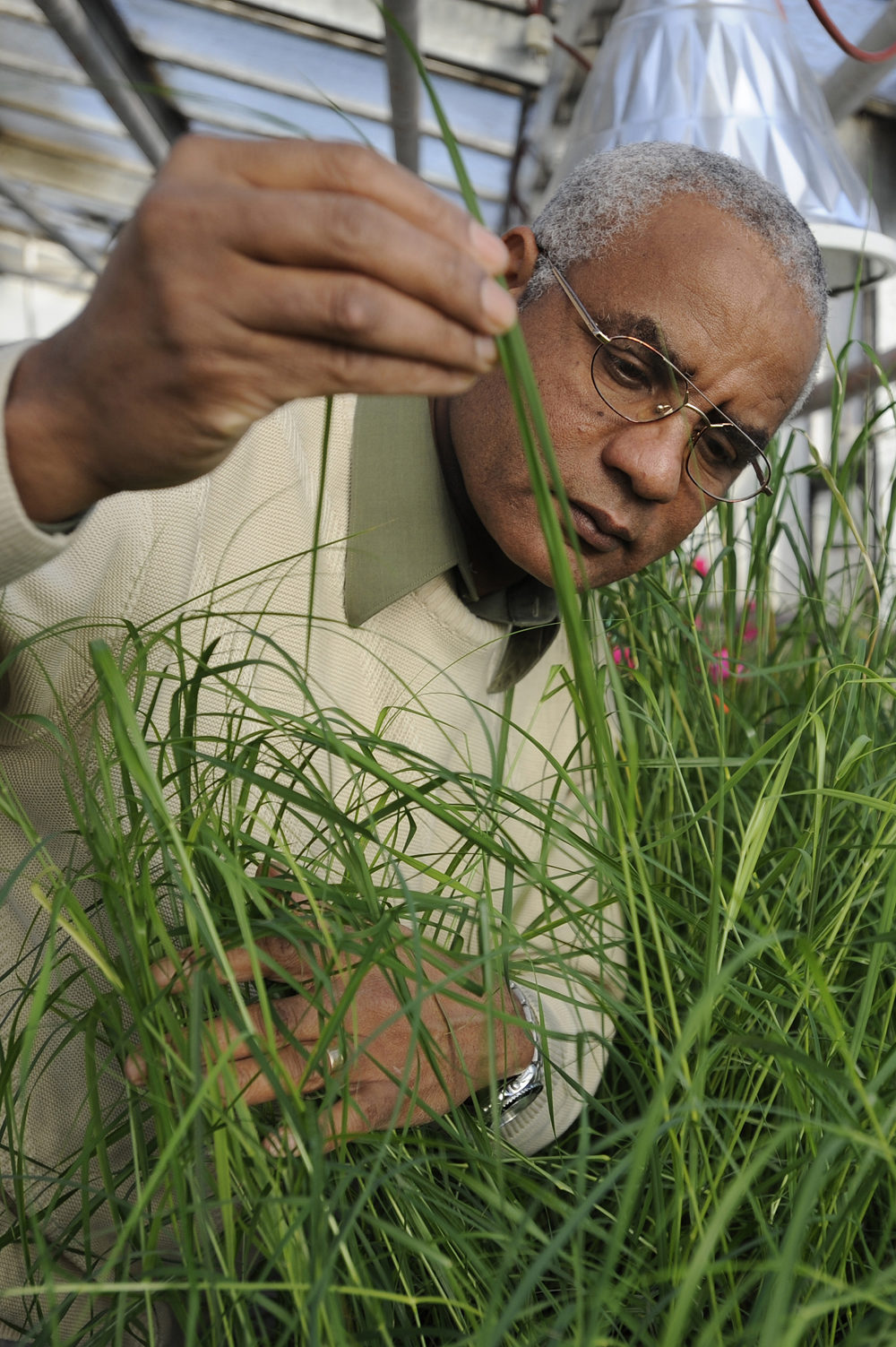Tef Biotechnology Project

His project with the Syngenta Foundation for Sustainable Agriculture (SFSA) focuses on tackling lodging--the collapse of plant stalks. Lodging is the major yield-limiting factor in tef, a very important cereal crop in Dr. Tadele’s native Ethiopia. His team uses a technique called TILLING to identify semi-dwarf lines resistant to lodging, but still responsive to fertilizer. Dr.Tadele is also coordinating the International Tef Genome Sequencing Initiative. He holds agronomy and molecular biology degrees from the universities of Addis Ababa, Alemaya (both Ethiopia), and Basel (Switzerland), and teaches at the University of Bern.
How would you briefly explain your public-private partnership (PPP) with the Syngenta Foundation (SFSA)?
SFSA provides financial support and its experts discuss progress with us. However, we think of Syngenta as the private party in this PPP. The company has helped us screen the tef plants and took care of them while they were at its greenhouse facilities.
What particular private sector strengths are necessary? Why is this kind of project not possible with public resources alone?
The private sector has facilities that our university does not have. For example, Syngenta has greenhouses with very good environmental conditions and controls. We hope the company will also help us with bioinformatics, as it can access some advanced systems that we don’t have.
What brought you into contact with the SFSA?
I did my PhD in Basel and got to know the then Novartis Foundation. When Syngenta was formed from the Novartis and Zeneca agribusinesses, I contacted the new company, and later its Foundation. I did not get a grant first time round, but tried again a few years later. SFSA reviewed the proposed project and was happy with its initial objective.
Which aspect of your SFSA PPP was most difficult to determine at the beginning; how did you solve this?
Convincing SFSA that the project can work! This research takes time. When designing a project, you need to convince the other parties’ management that you really can do the work.
What has been unexpected in this PPP?
We have had no operational surprises so far. SFSA assigned staff to accompany our project and help solve any problems that might occur. The project has grown from the initial phase, and has definitely improved through discussions with the Foundation.
From your general experience of PPPs, what would you personally say are the most important topics to consider in the planning phase?
You have to show that you can perform the project, and that it addresses the identified problem. You should start with the problem, and be able to convince your partners that the project objectives and goals can solve it. Identifying the problem is the highest priority.
What elements allow a PPP to actually deliver the products or services to smallholders?
We have to expand the circle of partners. We want to include the Ethiopian National Agricultural Research System (NARS) in the partnership, and follow what it is doing. We are already giving our seeds to them for testing and evaluation. We need to integrate these steps and think about them carefully when creating partnerships, because they are all linked.
What do you see as the future of PPP?
I am sure that they will increase – and they certainly should! There are not yet really all that many PPPs. The private sector has a lot of facilities, infrastructure, and skilled personnel, which it could bring into partnerships with the public sector. PPPs benefit both sides.
